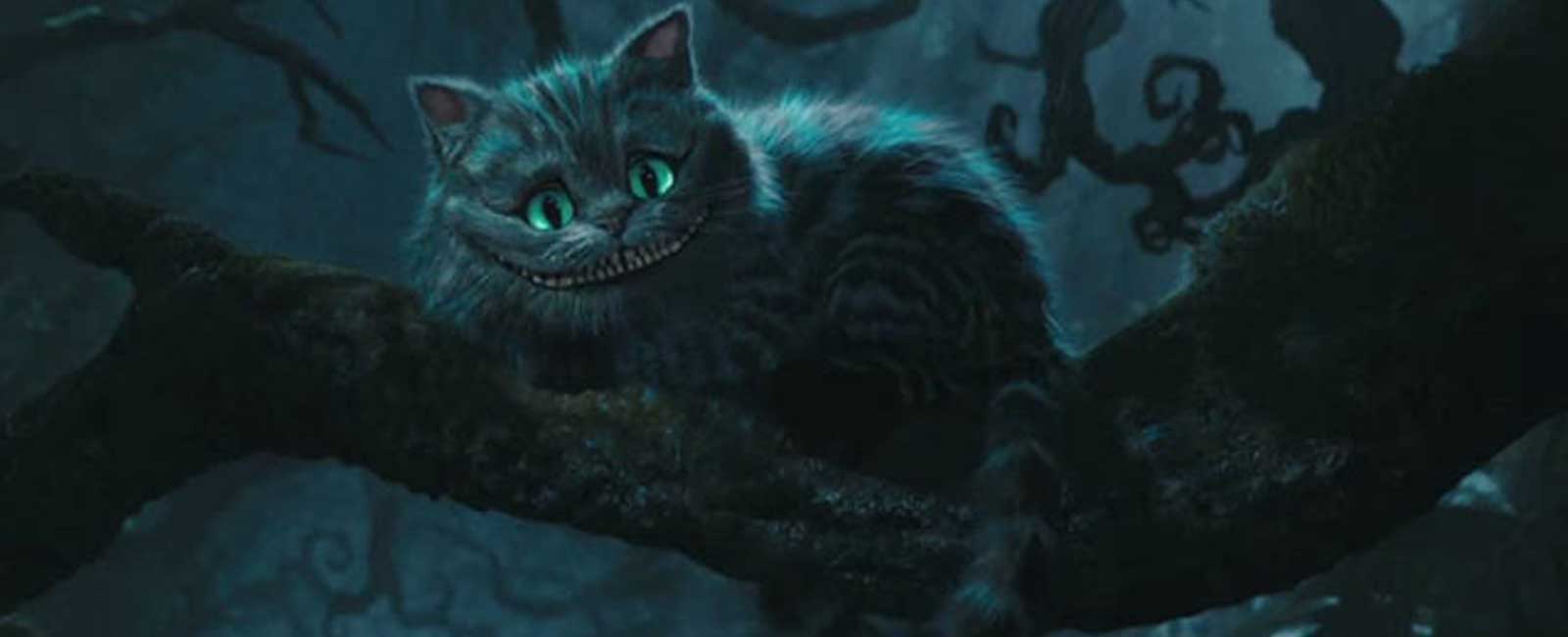How a young Pakistani astronomer shot ‘Cheshire Cat’ in sky
It is a group of galaxies nicknamed 'Cheshire Cat' because of its resemblance to a grinning feline fictional character from the popular 1865 novel 'Alice's Adventures in Wonderland'

There are some objects in space that an amateur astronomer can capture with relative ease. Bright and big galaxies, star clusters, and giant nebulas cover vast portions of our night sky.
Small telescopes and a decent camera are all one needs to tick off many deep-sky objects. These objects are split into catalogues for ease of finding them. The brightest and most magnificent is Messier's catalogue, denoted by an M followed by a number. This catalogue contains 110 deep sky objects and was published in the year 1774 by Charles Messier.
There are then other catalogues like the popular New General Catalogue (NGC), containing a couple thousand large to medium-sized objects. A more thorough catalogue with smaller objects is the Principal Galaxies Catalogue (PGC) and Uppsala General catalogue (UGC), which were published in the late 20th century. All these catalogues are easy to read with objects named like 'NGC2670, UGC5055'.
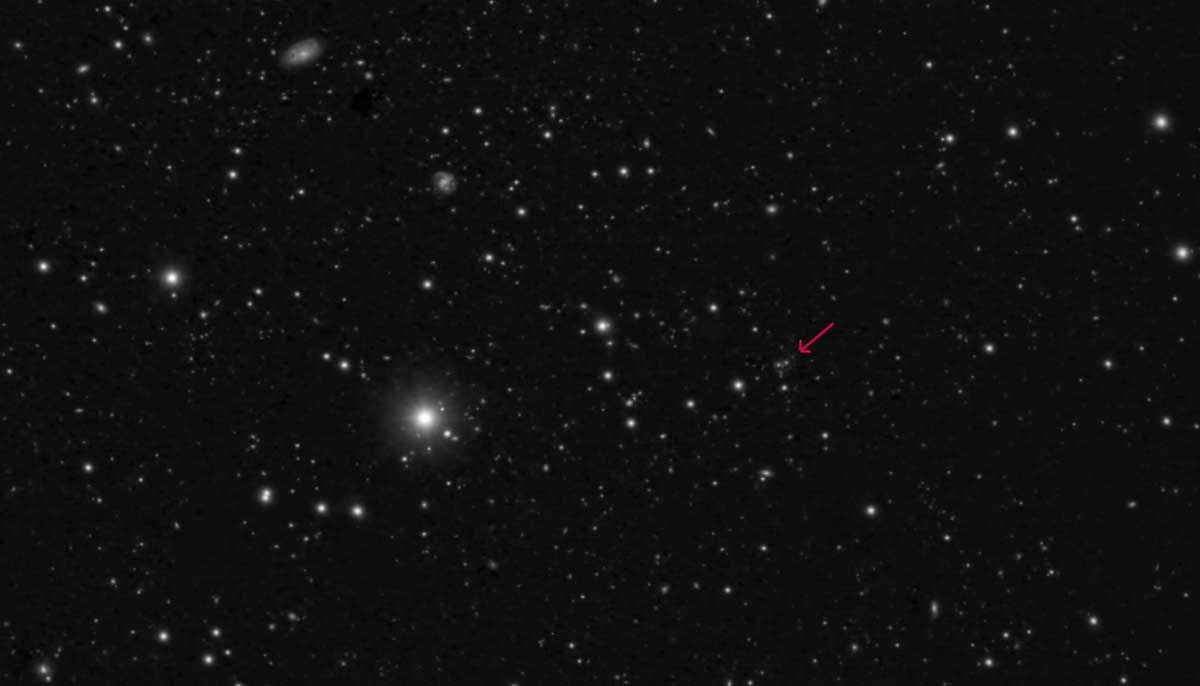
There are then ultra-deep space objects which are very obscure and have weird-looking names. One such object is 'SDSS J103842.59+484917.7', a mouthful of a name. SDSS stands for the Sloan Digital Sky Survey and the numbers following it stand for the coordinates in the sky.
There is an easier name for this object, the 'Cheshire Cat' group of galaxies. You will be correct in thinking it is named so because it resembles the Cheshire Cat, a fictional character from Alice's Adventures in Wonderland, the 1865 English novel by Lewis Carroll, a mathematics professor at Oxford University.
So, what is this Cheshire Cat object in space? Before going into its physical nature, I want you to understand the scale of sizes in our night sky. Sizes in astronomy are measured in arcs of units of degrees and their further breakdown into units of time. One degree contains 60 arc minutes, and one arc minute contains 60 arc seconds.
The moon covers half a degree in the night sky, which is equivalent to the size of your thumb held out at arm’s length, or 1,872 arc seconds. The Cheshire Cat galaxy group covers a size of 23 arc seconds in the night sky. This means its angular size is 0.0064 degrees, and 81 Cheshire Cats in a line would be the size of the moon in our sky. So, this object is very tiny and extremely difficult to capture from amateur telescopes.
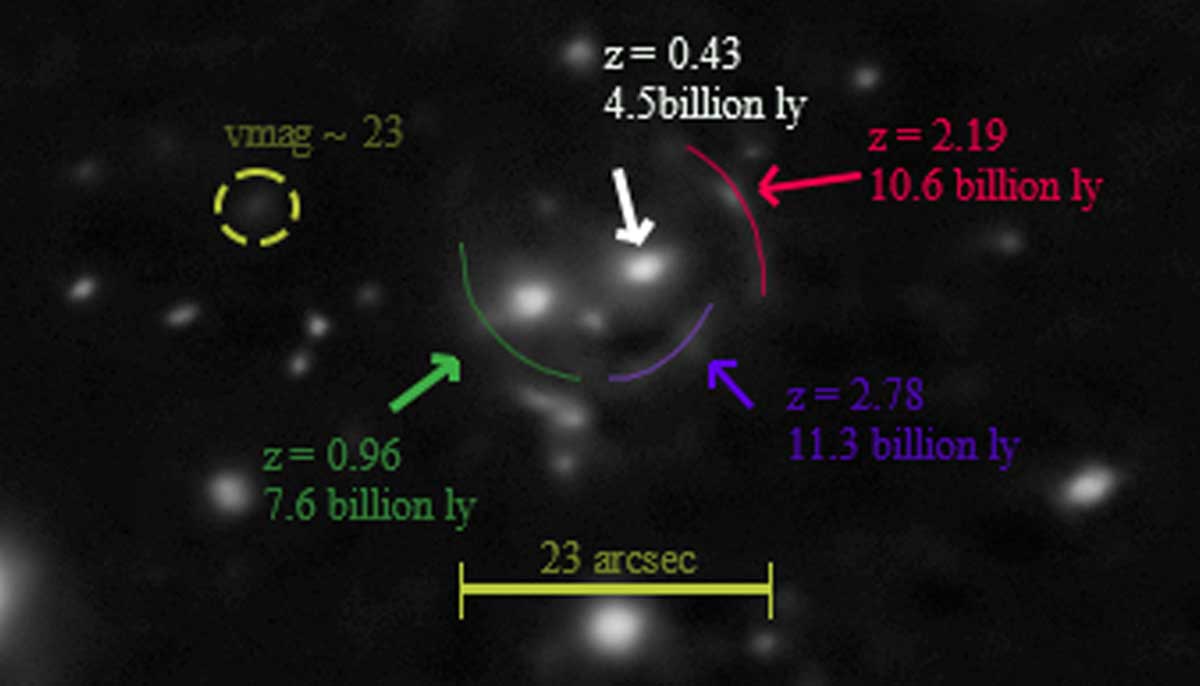
Now that you are familiar with the scale of things, let us discuss the object's physical nature. In 1915, Dr Albert Einstein formulated the general theory of relativity which described gravity as a geometric property of space-time, in simple words gravity bends space-time, so if light travels across a region with intense gravity, it bends along space-time. This was proved photographically when powerful telescopes discovered warped arcs of light in deep space which were discovered to be gravitationally lensed galaxies. The arcs were thus dubbed “Einstein rings”.
The phenomenon works similarly to how light is warped when viewed through an optical lens; instead in this case, the analogue to an optical lens is a massive galaxy which acts as a gravitational lens. The massive galaxy has such an intense gravitational influence that light from galaxies much further behind it gets lensed and warped around it. You might be familiar with the animations of black holes moving through space, and the light being bent around them. This is a similar scenario in real life.
The Cheshire Cat group consists of two massive elliptical galaxies which are slowly moving towards each other on a collision course. These two galaxies are the eyes of the cat. There is a foreground galaxy unrelated to the group that is visually aligned in such a way that it looks like the nose of the Cheshire Cat. Its smile is comprised of three different lensed images of galaxies. These lensed arcs of light are so dim that only a few photons per minute reach earth from them.
In astronomy, vast distances of tiny galaxies are measured using a redshift value of z. Spectrums of light are taken and the redshift is measured. Redshift is the shifting of the wavelength of light towards red due to the expansion of the universe. The lensed arcs have redshift values of greater than two which use a formula corresponding to a distance of more than 10 billion light years. This means it took that long for light to reach from those galaxies to our Earth. That is two times the age of our solar system.
I spent a few days at the Taqwa Space Observatory, the only dark sky observatory in Pakistan, home to three high-tech amateur telescopes. Nestled in a small village in the middle of nowhere near the city of Bela in Balochistan, the observatory gives access to pristine skies allowing all kinds of astronomy to be conducted.
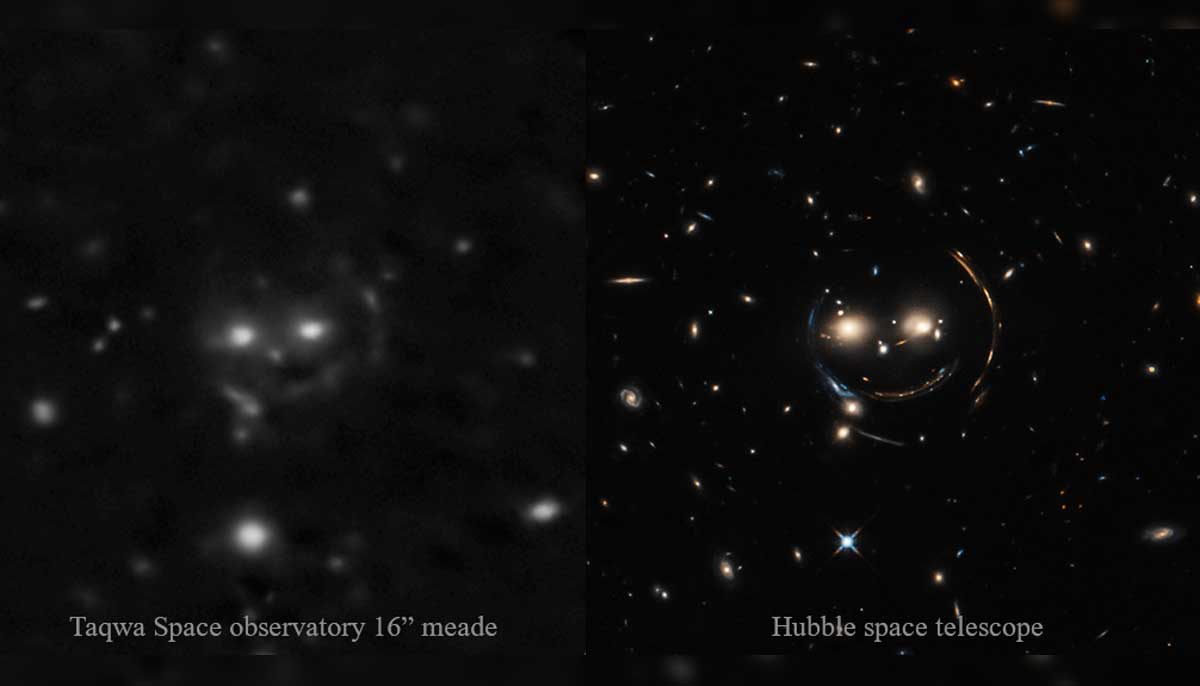
At Taqwa observatory, I had the idea to test the limits of their setup and image the Cheshire Cat group. Such objects are usually only limited to optical devices like the Hubble Space Telescope, but only a few amateurs, the number of whom you can count on one hand have imaged the Cheshire Cat group.
I spent a few nights with Taqwa's 16-inch Schmidt–Cassegrain telescope and pointed it continuously at the Cheshire group for a collective of 17 hours. Exposing the camera for individual shots of three minutes each, I combined the images using astronomy stacking software which allow images to be stacked to increase the signal-to-noise ratio. Individual images have a lot of noise, the camera had to be cooled down to -20° Celsius to limit the noise, but stacking images enhances the dimmest features while minimising the noise. Noise is the grainy pixels which you see in images every day.
After getting a raw stacked image, a lot of careful processing was done to clean up the image and bring out the weak gravitational arcs. The whole field of view of the camera and telescope was quite large. It is speckled with hundreds of tiny galaxies, numbering more than the stars in the same region. The whole image is equivalent to an amateur deep field image which like the Hubble Deep Field contained only tons and tons of galaxies.
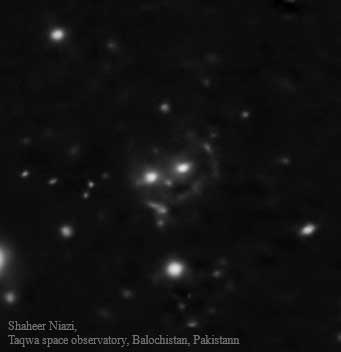
Cropping out the Cheshire Cat group from the main image shows that I successfully captured the arcs of bent light which form the smile of the cat; comparing it to Hubble's image, one can see how close I got using a relatively tiny telescope from the ground.
This image is also the first and only from Pakistan and has now joined the few from the whole world. It is truly a great achievement for astronomy in Pakistan as capturing such dim and tiny objects has proven the capabilities of an observatory in Pakistan, now imagine what else in between can be done in astronomy now that this milestone image has been captured.
The future of astronomy in Pakistan is bright due to the emergence of amateurs in the field who invest in high-tech setups and involve themselves in professional work. Taqwa observatory in a way has opened the doors to observational astronomy in Pakistan and universities should seek collaborations to initiate research as the setup is highly capable.
Muhammad Shaheer Niazi is a 22-year-old scientist pursuing an undergraduate degree in physics. He published his first research paper at age 16 in the Royal Society Open Science Journal and is part of the Forbes 30 under 30 list for 2018. He tweets @M_shaheer_Niazi
— Banner and thumbnail image by Cinema Cats



